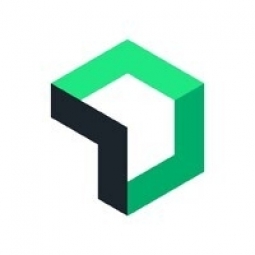Technology Category
- Application Infrastructure & Middleware - Event-Driven Application
- Platform as a Service (PaaS) - Application Development Platforms
Applicable Industries
- Cement
- Retail
Applicable Functions
- Procurement
- Product Research & Development
Use Cases
- Behavior & Emotion Tracking
- Leakage & Flood Monitoring
Services
- System Integration
About The Customer
Kmart is one of Australia's biggest and most-loved retailers, with a history spanning over 50 years. From its humble beginnings in 1969, Kmart has built a promise of an affordable lifestyle for its customers. Today, Kmart is known as a leading product development company, with more than 300 stores and over 44,000 employees throughout Australia and New Zealand. Kmart's scale and sourcing capabilities underpin its low-cost business model, which allows them to continually deliver the lowest prices. With 84% of Australians living within 10km of one of its stores, Kmart has a strong brick-and-mortar presence in a number of communities. However, they also continue to invest in their digital business, to help strengthen their market-leading and personalized omnichannel experience and deepen customer engagement.
The Challenge
Kmart, one of Australia's largest retailers, was facing a challenge in its digital transformation journey. Despite having a strong physical presence with 84% of Australians living within 10km of one of its stores, Kmart was keen on investing in its digital business to strengthen its market-leading and personalized omnichannel experience. The company was looking for ways to improve operational efficiencies and deliver greater value for customers by investing in data and technology. In 2020, Kmart commenced a re-platforming process, which included assessing existing infrastructure and systems and sourcing new solutions to support and facilitate its digital evolution. The main goal was to deliver peak performance across online and in-store point of sale (POS) systems, improve system resilience, and enhance customer experience. Additionally, Kmart wanted to improve visibility as the company did not have reliable data about how their website was being accessed, or the purchase journeys their customers were taking.
The Solution
To support its digital transformation, Kmart partnered with New Relic to roll out its all-in-one observability platform. This solution was implemented to deliver peak performance across its stack while ensuring a proactive understanding of both the application environment and the customer experience. Kmart leveraged New Relic application performance monitoring to identify anomalies, browser monitoring for full visibility into web page performance, synthetics monitoring to monitor and simulate user journeys, and Slack integration to deliver intelligent alerts. Kmart also used synthetics to test and prepare for major online events, such as the Christmas shopping period. New Relic also created dashboards to provide Kmart with the ability to track user behavior and stock movement. Using set metrics has given Kmart the ability to catch issues and identify emerging trends.
Operational Impact
Quantitative Benefit

Case Study missing?
Start adding your own!
Register with your work email and create a new case study profile for your business.
Related Case Studies.

Case Study
System 800xA at Indian Cement Plants
Chettinad Cement recognized that further efficiencies could be achieved in its cement manufacturing process. It looked to investing in comprehensive operational and control technologies to manage and derive productivity and energy efficiency gains from the assets on Line 2, their second plant in India.

Case Study
Improving Production Line Efficiency with Ethernet Micro RTU Controller
Moxa was asked to provide a connectivity solution for one of the world's leading cosmetics companies. This multinational corporation, with retail presence in 130 countries, 23 global braches, and over 66,000 employees, sought to improve the efficiency of their production process by migrating from manual monitoring to an automatic productivity monitoring system. The production line was being monitored by ABB Real-TPI, a factory information system that offers data collection and analysis to improve plant efficiency. Due to software limitations, the customer needed an OPC server and a corresponding I/O solution to collect data from additional sensor devices for the Real-TPI system. The goal is to enable the factory information system to more thoroughly collect data from every corner of the production line. This will improve its ability to measure Overall Equipment Effectiveness (OEE) and translate into increased production efficiencies. System Requirements • Instant status updates while still consuming minimal bandwidth to relieve strain on limited factory networks • Interoperable with ABB Real-TPI • Small form factor appropriate for deployment where space is scarce • Remote software management and configuration to simplify operations

Case Study
Digital Retail Security Solutions
Sennco wanted to help its retail customers increase sales and profits by developing an innovative alarm system as opposed to conventional connected alarms that are permanently tethered to display products. These traditional security systems were cumbersome and intrusive to the customer shopping experience. Additionally, they provided no useful data or analytics.

Case Study
How Sirqul’s IoT Platform is Crafting Carrefour’s New In-Store Experiences
Carrefour Taiwan’s goal is to be completely digital by end of 2018. Out-dated manual methods for analysis and assumptions limited Carrefour’s ability to change the customer experience and were void of real-time decision-making capabilities. Rather than relying solely on sales data, assumptions, and disparate systems, Carrefour Taiwan’s CEO led an initiative to find a connected IoT solution that could give the team the ability to make real-time changes and more informed decisions. Prior to implementing, Carrefour struggled to address their conversion rates and did not have the proper insights into the customer decision-making process nor how to make an immediate impact without losing customer confidence.

Case Study
Ensures Cold Milk in Your Supermarket
As of 2014, AK-Centralen has over 1,500 Danish supermarkets equipped, and utilizes 16 operators, and is open 24 hours a day, 365 days a year. AK-Centralen needed the ability to monitor the cooling alarms from around the country, 24 hours a day, 365 days a year. Each and every time the door to a milk cooler or a freezer does not close properly, an alarm goes off on a computer screen in a control building in southwestern Odense. This type of alarm will go off approximately 140,000 times per year, equating to roughly 400 alarms in a 24-hour period. Should an alarm go off, then there is only a limited amount of time to act before dairy products or frozen pizza must be disposed of, and this type of waste can quickly start to cost a supermarket a great deal of money.








